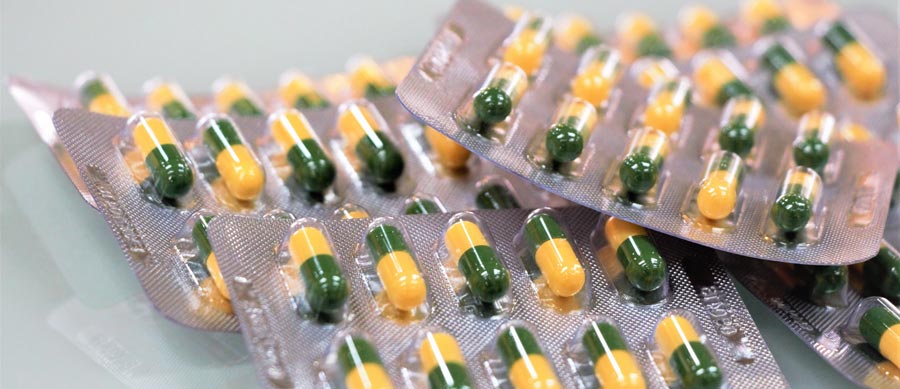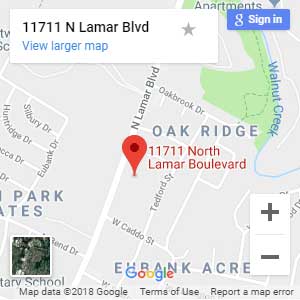How Long Does Tramadol Stay In Your System?
Tramadol is eliminated from your system in about two days, but it may be detectible for longer than that using certain drug tests.
Table of contents
Tramadol is frequently prescribed to relieve pain after surgery or to treat conditions that cause chronic pain.
Tramadol is eliminated from your system in about two days, but it may be detectible for longer than that using certain drug tests.
This timeline isn’t an exact science and the rate at which tramadol is eliminated from your body will vary depending on several individual factors. We’ll go into more detail to provide clarity.
What Is Tramadol?
Tramadol is a prescription opioid medication. It’s sold under the brand names Ultram, ConZip, and Ultracet. Like other opioid drugs, tramadol works by binding to opioid receptors in the brain and body and activating them. This decreases the user’s perception of pain and releases dopamine, which can be psychologically rewarding.
Since tramadol is also a monoamine reuptake inhibitor, it blocks the reabsorption of serotonin and norepinephrine into nerve terminals, which contain neurotransmitters. This aids in its ability to reduce pain.
Tramadol is considered less habit-forming than other prescription opioid drugs, but it’s still highly addictive. As such, the FDA has labeled tramadol with warnings about its potential for abuse and addiction but it continues to be frequently abused. According to the Drug Enforcement Administration (DEA), in 2018, there were 36.5 million prescriptions sold and dispensed to individuals. That same year, 1.5 million people ages 12 and older misused tramadol products.1
What Is Tramadol Used For?
Tramadol is FDA-approved to treat moderate to moderately severe pain in adults.2 The immediate-release version of the drug provides pain relief for about 4 to 6 hours while the extended-release version of tramadol offers 12 to 24 hours of pain relief.3,4
Can Tramadol Be Abused?
Yes. Many people start out taking tramadol as prescribed by a doctor end up abusing it later. Even if you take tramadol as prescribed, it can be addictive and may cause withdrawal symptoms when you stop taking it. This is especially likely if you’ve taken tramadol for several weeks or months.
Tramadol can also be very dangerous if you take it in large doses. One of the major risks of abusing tramadol or taking larger doses than prescribed is overdose. Signs of tramadol overdose include:
- Drowsiness
- Cold, clammy skin
- Slowed heart rate
- Slowed breathing
- Low blood pressure
- Constricted pupils
- Seizures
- Cardiac arrest
- Coma
Taking tramadol with other opioids, alcohol, or benzos is particularly dangerous because it can increase your risk of having an overdose.
How Long Does Tramadol Stay In Your Body?
Tramadol will be eliminated from your body about two days after the initial dose, but it can vary from person to person. Several different factors play a role in the amount of time this process takes, including:
- Age
- Sex
- Weight
- Metabolism
- Organ function
- Liver enzyme activity
- The amount of tramadol taken
- How long you’ve been taking tramadol
Tramadol may also be detected in your body for longer than two days with certain types of drug tests.
- Urine test: Tramadol may be detected in urine for 1 to 4 days after the last use.5
- Saliva test: Tramadol may be detected in saliva up to 48 hours after the last use.6
- Hair test: Tramadol may be detected in hair for 4 to 6 months after the last use.7
- Blood test: Tramadol may be detected in blood for 12 to 24 hours after the last use.
Tramadol Half-Life
Tramadol has a half-life of 5 to 6 hours.8 The half-life of a drug is the length of time required for its concentration to decrease to half of its starting dose in the body.9 Knowing the half-life of a drug can help you determine how long it takes to be eliminated from your body.
So, if you’re wondering, “How long does it take for tramadol to wear off?” the answer is complicated. If you’re taking the immediate-release version, its effects will wear off in about 4 to 6 hours but the effects will last longer if you’re taking the extended-release version—about 12 to 24 hours, to be exact.
However, just because you don’t feel its effects, doesn’t mean the tramadol has been completely eliminated from your system. As described in detail above, tramadol takes a couple of days to completely leave your body.
What Are Signs of Tramadol Addiction?
Tolerance (needing more tramadol to achieve the desired effects) and withdrawal symptoms are two of the most common signs of tramadol addiction. However, there are others. Depending on the severity of the person’s tramadol addiction, they may include:
- Not being able to control tramadol use.
- Spending a lot of time thinking about using tramadol, trying to get it, or recovering from using it.
- Trying to stop using tramadol but being unable to.
- Losing interest in normal hobbies and activities.
- Borrowing or stealing money to pay for tramadol.
- Hiding your tramadol use from friends and family.
- Having trouble at work, in relationships, or at school due to tramadol abuse.
- Going to more than one doctor to get tramadol prescriptions.
- Taking tramadol with other drugs or alcohol to enhance its effects.
- Continuing to take tramadol long after you need it for medical purposes.
How to Detox From Tramadol
If you or a loved one is suffering from tramadol addiction, you’re not alone and you deserve to receive treatment and help. Detoxing from tramadol on your own can be dangerous and withdrawal symptoms can also be extremely uncomfortable, leaving you in a vulnerable position.
A medical detox program can provide professional treatment and therapy to help you cope with common tramadol withdrawal symptoms, including:
- Yawning
- Muscle and body aches
- Sweating
- Runny nose
- Restlessness
- Anxiety
- Agitation
- Hypertension
- Fast breathing
- Racing heart
- Insomnia
- goosebumps/chills
- Diarrhea
- Loss of appetite
- Stomach pain
- Dilated pupils
- Difficulty concentrating
- Depression
- Strong cravings
In general, tramadol withdrawal symptoms may start about 12 hours after your last dose. The most severe tramadol withdrawal symptoms are likely to peak a few days after your last dose and will gradually taper off. Certain psychological effects of tramadol withdrawal, like depression, insomnia, or anxiety, may last a little longer.
If you are severely addicted to tramadol, your withdrawal symptoms are likely to be more severe and long-lasting than someone with a mild dependence. That’s why it’s important to seek professional treatment and care. Quitting cold turkey may make tramadol symptoms worse and it’s always wise to have medical professionals nearby during tramadol detox, just in case you experience a medical emergency and need help.
Medical detox is the most comprehensive form of tramadol detox and will provide adequate care and treatment for withdrawal symptoms. Many detox centers use FDA-approved drugs to treat opioid withdrawal, such as methadone, buprenorphine, or naltrexone. However, doctors and nurses may use a variety of prescription drugs and over-the-counter medications to target symptoms of tramadol withdrawal and ensure that opioid detox clients are comfortable and safe.
Medical detox also provides therapy for clients who may be suffering from depression, anxiety, or other psychological symptoms of tramadol withdrawal. Interested clients may also attend H&I meetings, which serve as a low-pressure introduction to the 12-Step Program.
Treatment for Tramadol Addiction
After tramadol detox, staff may recommend that you continue with tramadol addiction treatment at a rehab center. Although detox is an important part of recovering from tramadol addiction, it’s only the first step of getting help.
Tramadol addiction treatment in rehab consists of counseling and therapy but it can also include medication, depending on your treatment needs. Types of behavioral therapies that are frequently used to treat tramadol addiction during rehab include:
- Cognitive behavioral therapy
- Contingency management
- Motivational interviewing
- Family therapy
- 12-Step facilitation therapy
- Specialized therapies like art therapy or music therapy
Like other chronic conditions, tramadol addiction must be managed to prevent relapse. As a result, completing a rehab program after detox is ideal for those who want to sustain long-term and lasting recovery.
If you or a loved one needs help overcoming your tramadol addiction, Briarwood Detox Center can provide safe and effective opioid detox to help you get sober.
References:
- https://www.deadiversion.usdoj.gov/drug_chem_info/tramadol.pdf
- https://medlineplus.gov/druginfo/meds/a695011.html
- https://www.ncbi.nlm.nih.gov/pmc/articles/PMC2386353/
- https://www.nps.org.au/radar/articles/once-daily-tramadol-extended-release-durotram-xr-for-pain
- https://www.aruplab.com/files/resources/pain-management/DrugAnalytesPlasmaUrine.pdf
- https://www.cansfordlabs.co.uk/choosing-a-test/oral-fluid-saliva-testing/
- http://samih-abualraghib.com/Determination%20of%20tramadol.pdf
- https://www.sciencedirect.com/topics/neuroscience/tramadol
- https://www.ncbi.nlm.nih.gov/books/NBK554498/
Break Free From Your Addiction Today
(in 3 easy, confidential steps)
Verify your insurance
Complete our fast, free, and easy verification process over the phone to determine the extent of your insurance coverage.
Make an informed decision
We will provide personalized placement recommendations based on your insurance, treatment needs, financial situation, and schedule.
Contact us
Call (888) 857-0557 or fill out our online form for a free and confidential personal consultation with an admissions specialist.











